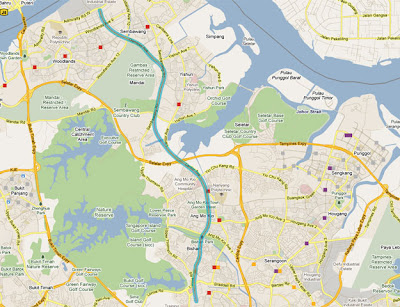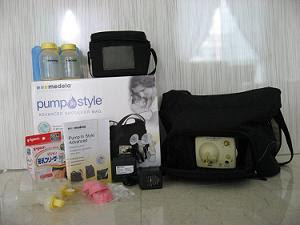Wear red if you want to win at Singapore's Marina Bay Sands casino, but sport white to boost your luck at rival Resorts World Sentosa.
So says feng shui expert Danny Cheong, who has seen demand for his skills soar thanks to last year's opening of the city-state's first two casino resorts.
"Before I would occasionally get clients who asked for help with playing the horses or the lottery," said Cheong, a 50-year-old Singaporean trained in Hong Kong. "Now everybody wants advice about the casinos."
Singapore's two huge casino resorts, which together cost more than $10 billion to build, are at the center of a decade-long effort to diversify the island's economy toward services such as tourism and finance and less on manufacturing. The casinos have created more than 20,000 jobs, helped attract record visitors and fueled 14.7 percent economic growth last year, likely the second-highest in the world behind Qatar.
Singapore is also benefiting from strong economic growth in Asia, led by China. Almost all the growth of tourist arrivals last year came from regional neighbors and, for the first time, Chinese demand for Singapore's exports likely surpassed that of the U.S. in 2010.
To woo Chinese visitors, the resorts incorporated feng shui and other Chinese beliefs in their design and operation. Resorts World opened its casino at 8:28 a.m. on Feb. 14 while Marina Bay Sands opened March 27 at 3:18 p.m. because eight is considered a lucky number in Chinese culture.
Its strong economic ties in the region, particularly with China, put Singapore in a favorable position to ride the current wave of growth from Asia, said DBS economist Irvin Seah.
Gross domestic product rose 12.5 percent in the fourth quarter from a year ago, compared with 10.5 percent in the third quarter, the Trade and Industry Ministry said Monday. The economy grew an annualized, seasonally adjusted 6.9 percent in the fourth quarter after contracting 18.9 percent in the third, the ministry said.
Singapore in recent decades lost much of its low-wage manufacturing to regional emerging economies like China and Vietnam, and it has focused on exporting more value-added products such as semiconductors and pharmaceuticals. Manufacturing soared 28 percent in the fourth quarter from the previous year while services gained 8.8 percent and construction slumped 1.2 percent, the ministry said.
This year, the resorts should contribute about 1.7 percentage points of GDP growth to an economy that Singapore's DBS bank expects will slow, but still grow a healthy 7 percent. The government is forecasting economic growth of between 4 percent and 6 percent for 2011.
Services will overtake manufacturing as the key contributor to growth, and gaming will overtake pharmaceuticals as the fastest growing sector, Seah said.
Singapore, which has a population of 5 million and is about the size of New York City, saw visitor arrivals average about 1 million per month and jump 20 percent in the first 11 months of last year from the same period in 2009.
The resorts also plan to expand this year. Marina Bay Sands, owned by Las Vegas Sands Corp., is scheduled to open the world's first ArtScience Museum in February while Genting Bhd's Resorts World will open its Maritime Xperiential Museum by midyear, with two more hotels and a marine life park later.
Retailers, at the resorts and at Singapore's famous Orchard Road shopping malls, have also benefited from the tourism boom, with spending by visitors soaring 47 percent to SG$13.7 billion in the third quarter from the previous year.
Other winners include feng shui masters such as Cheong, who for 22 years has advised companies such as Pizza Hut, Renault and Robinson's department store on the finer points of attracting the right kind of qi, or energy.
Gamblers are now paying 500 Singapore dollars ($380) for "wealth achievement" sessions -- advice on how to beat the casinos where Cheong analyzes the date and time of a client's birth to dole out tips about lucky clothes and the direction to face at a card table.
Some Singaporeans have misgivings about the embrace of casinos, however.
Lee Kuan Yew, prime minister from 1959 to 1990, rejected casinos out of fear they would undermine morality. Lee's son, current Prime Minister Lee Hsien Loong, argued the resorts would help make Singapore a world-class city.
To discourage impulsive gambling by locals, the government imposes on all citizens and permanent residents a SG$100 entrance fee for a 24-hour visit or SG$2,000 for a year. More than SG$100 million was collected in entry fees last year, which suggests many Singaporeans still tried their luck.
Local media have reported increasingly aggressive harassment of debtors by loan sharks, and police last year began a crackdown on illegal lending, which often targets desperate gamblers. The government has banned about 194 problem gamblers from casinos at the request of family members and more than 2,000 people have asked to be excluded.
Even some feng shui experts are wary of encouraging betting. Adelina Pang, author of Classical Feng Shui for Homes Today, said she's frequently approached by poorer Singaporeans who hope she can help them hit the jackpot.
"I try to tell them not to gamble because I don't want to help them dig their own grave," Pang said. "With the casinos here now it's so convenient that some people are getting really addicted and not taking care of their families."
[ Alex Kennedy, Associated Press, On Monday 3 January 2011 ]



















